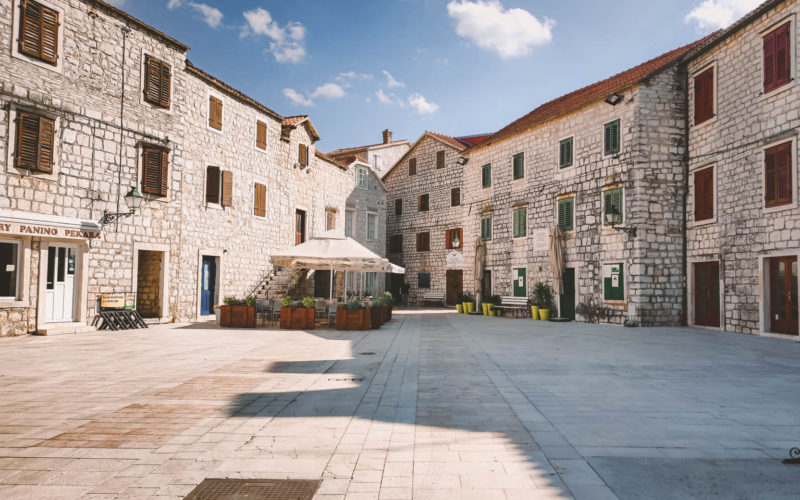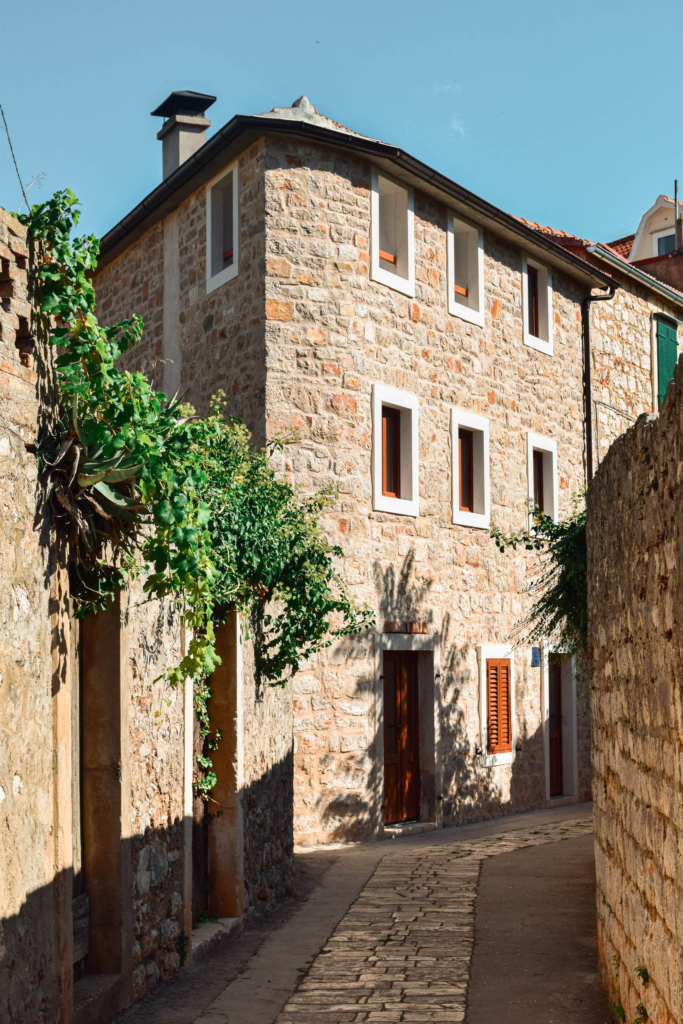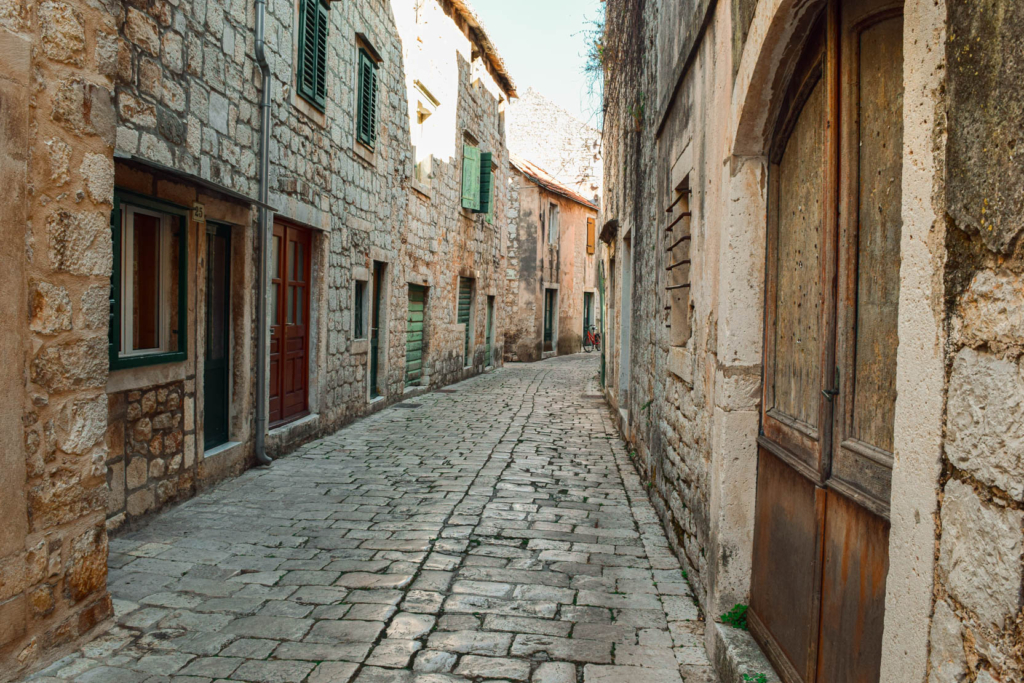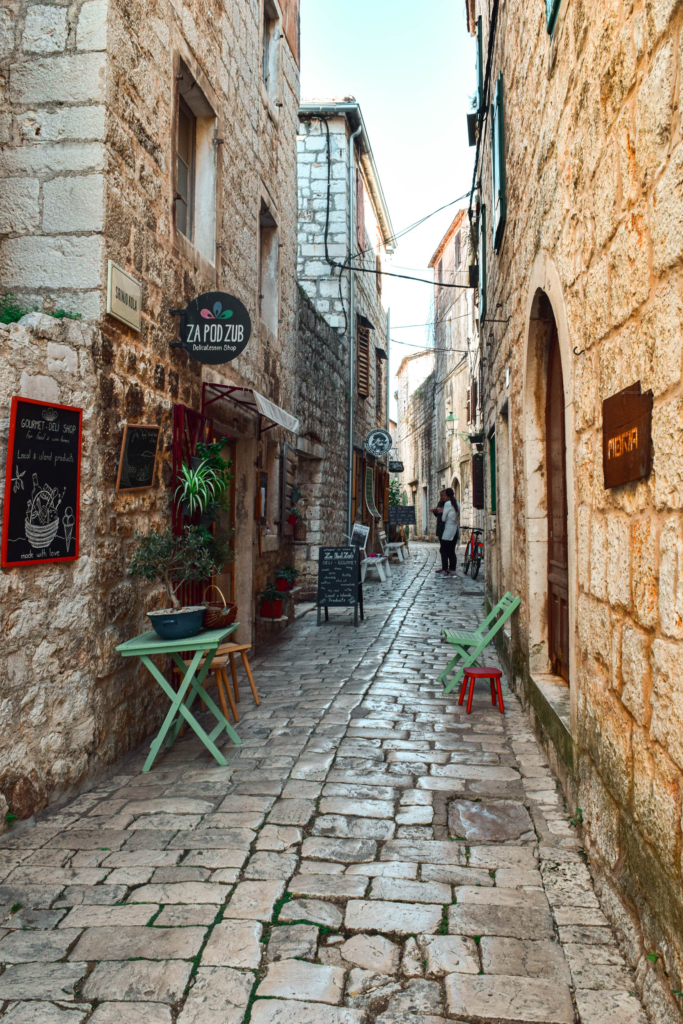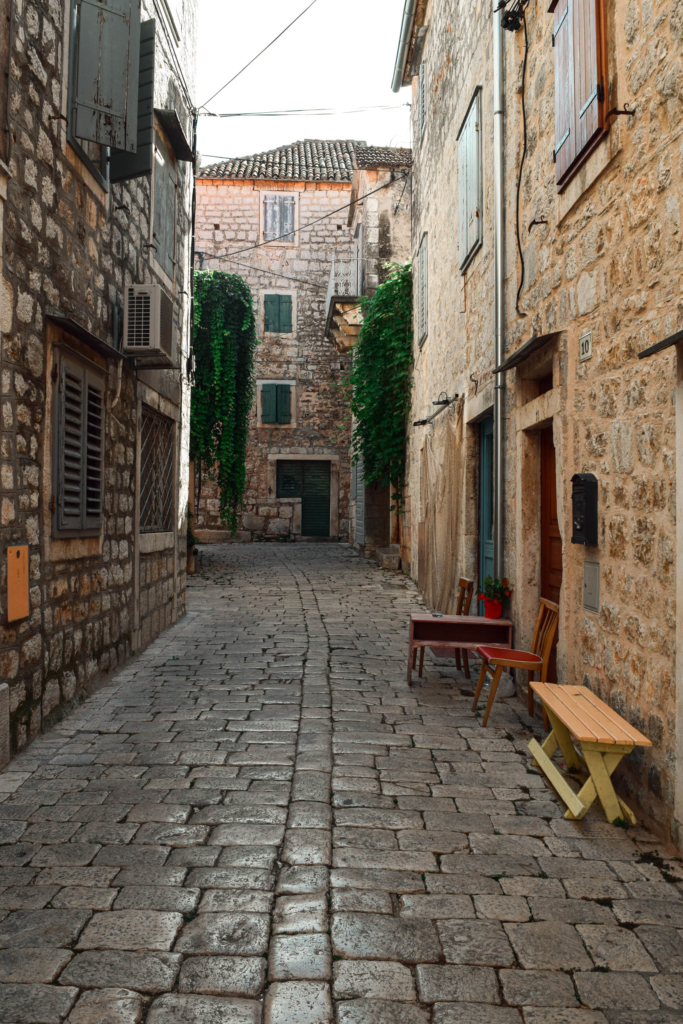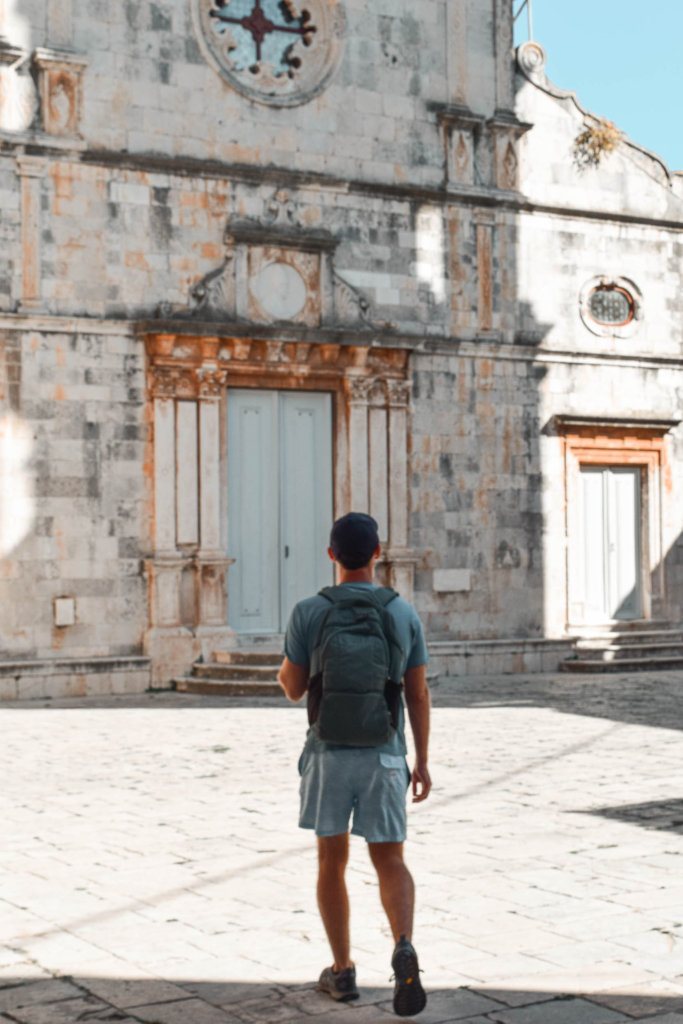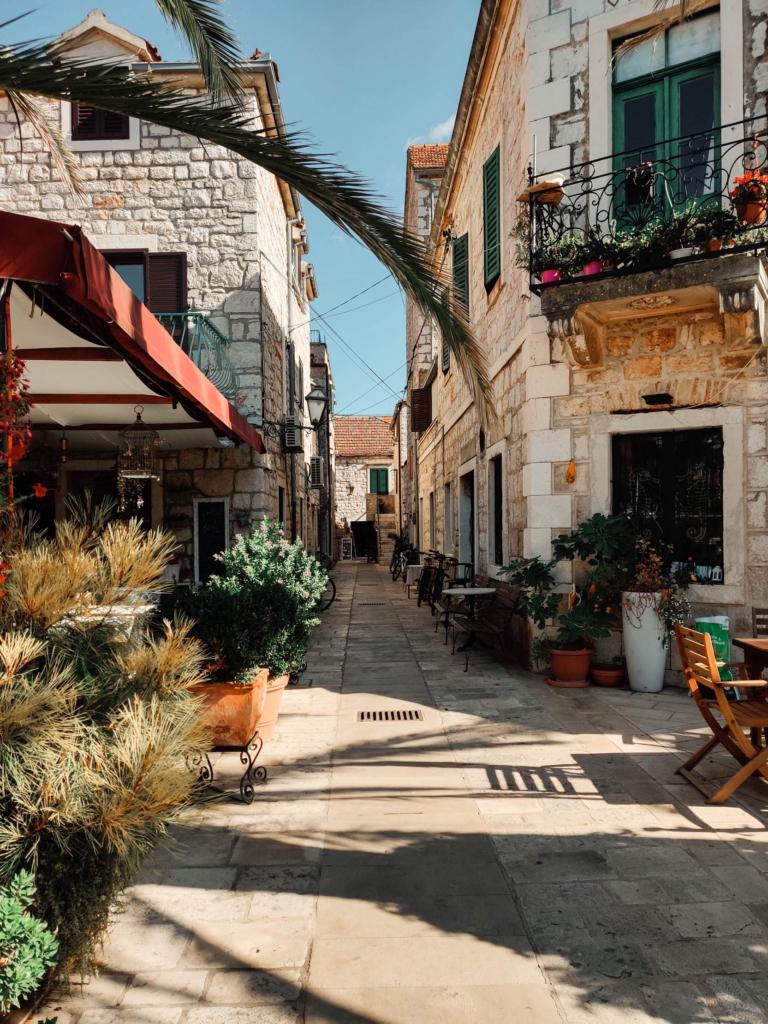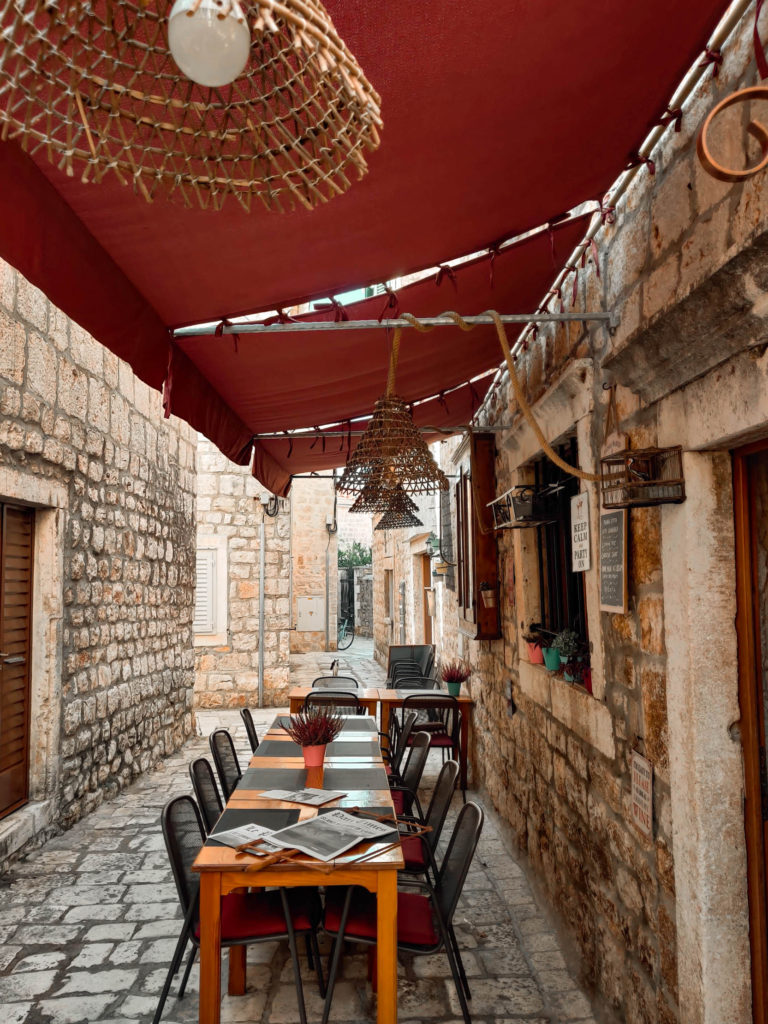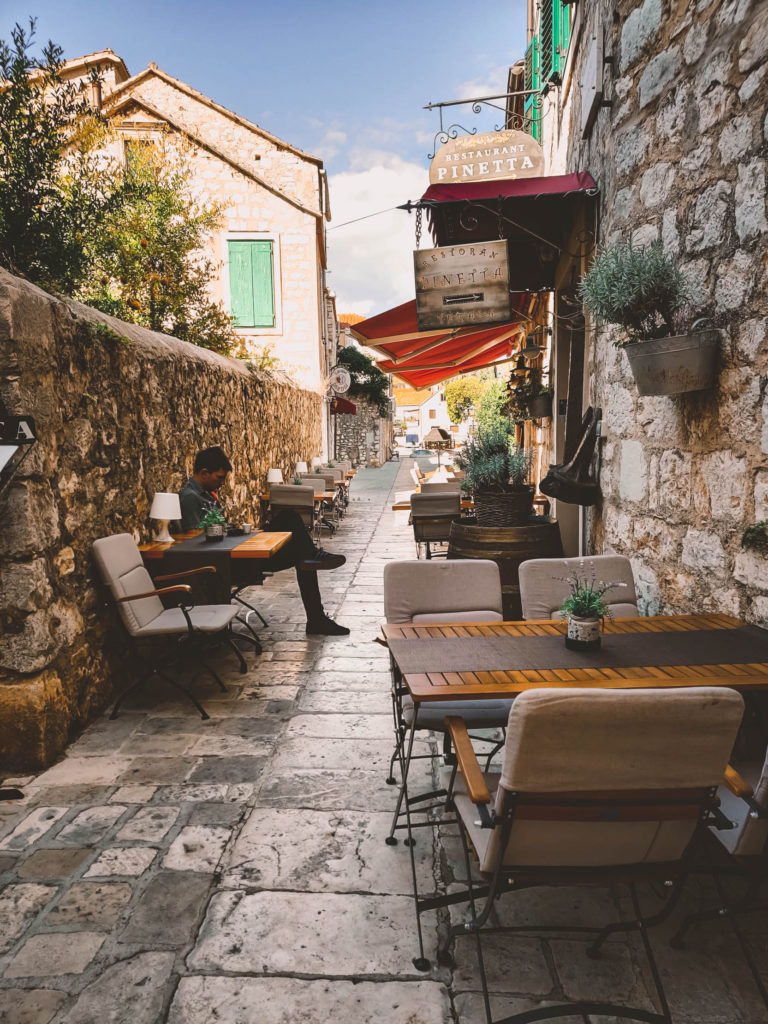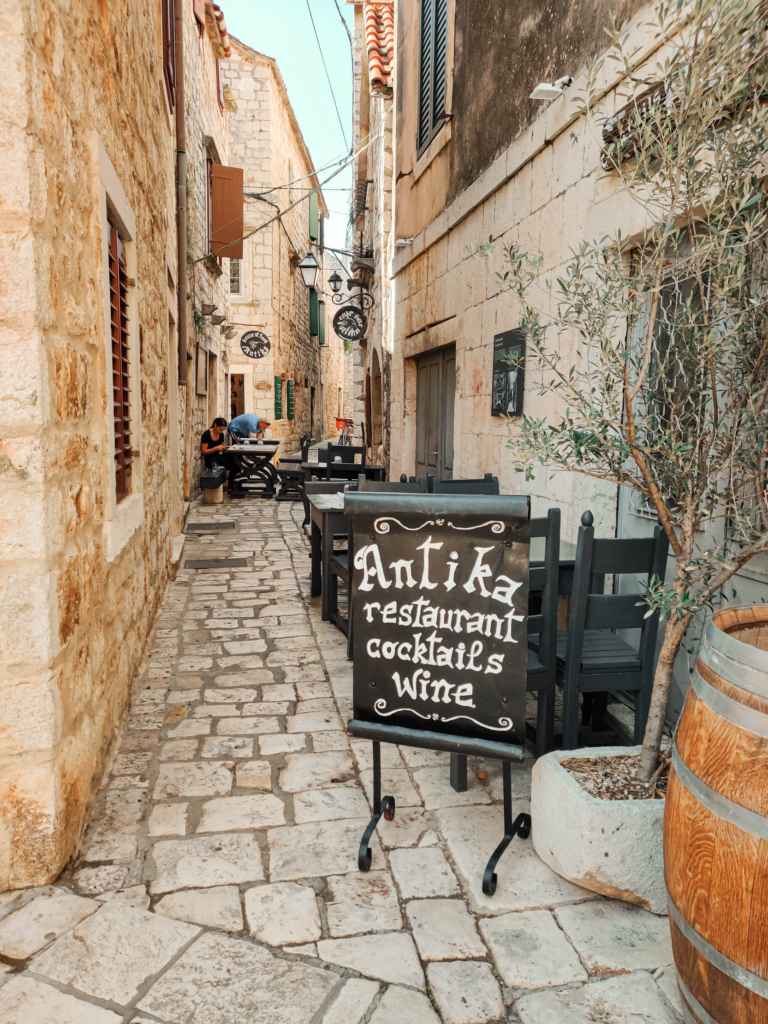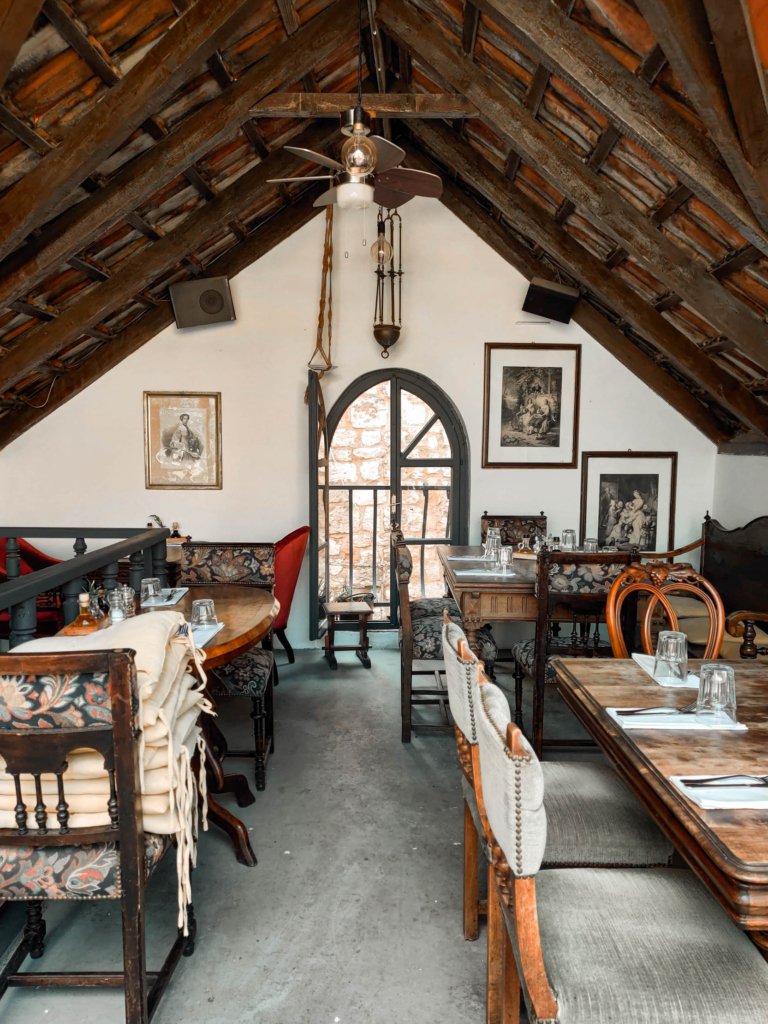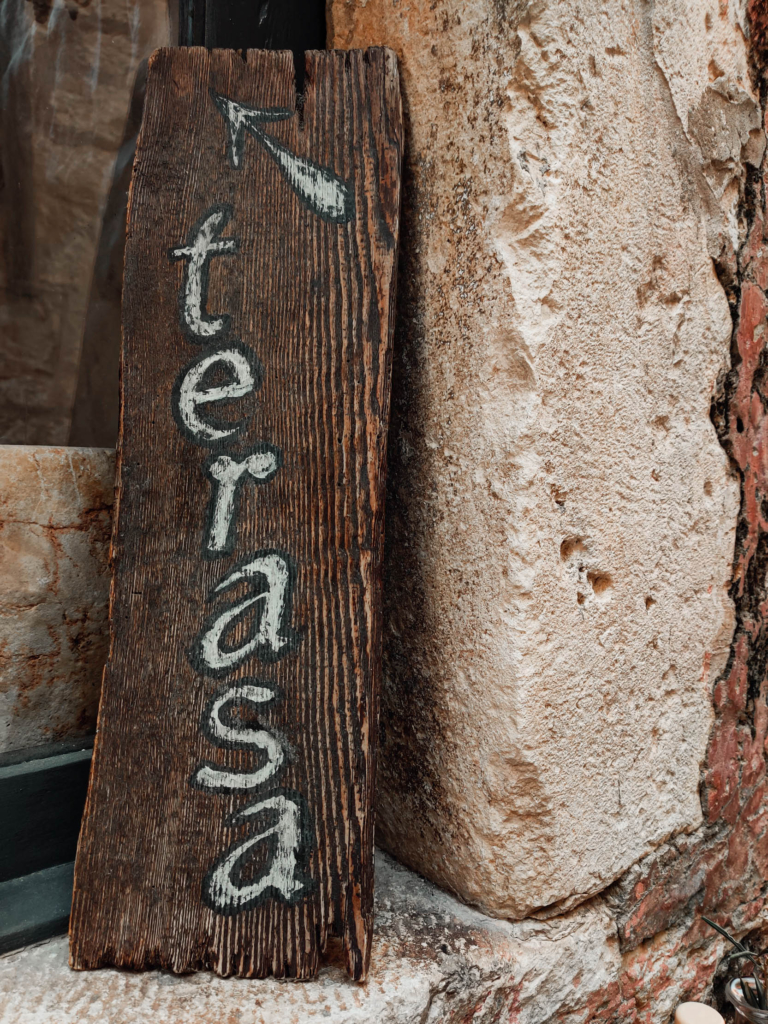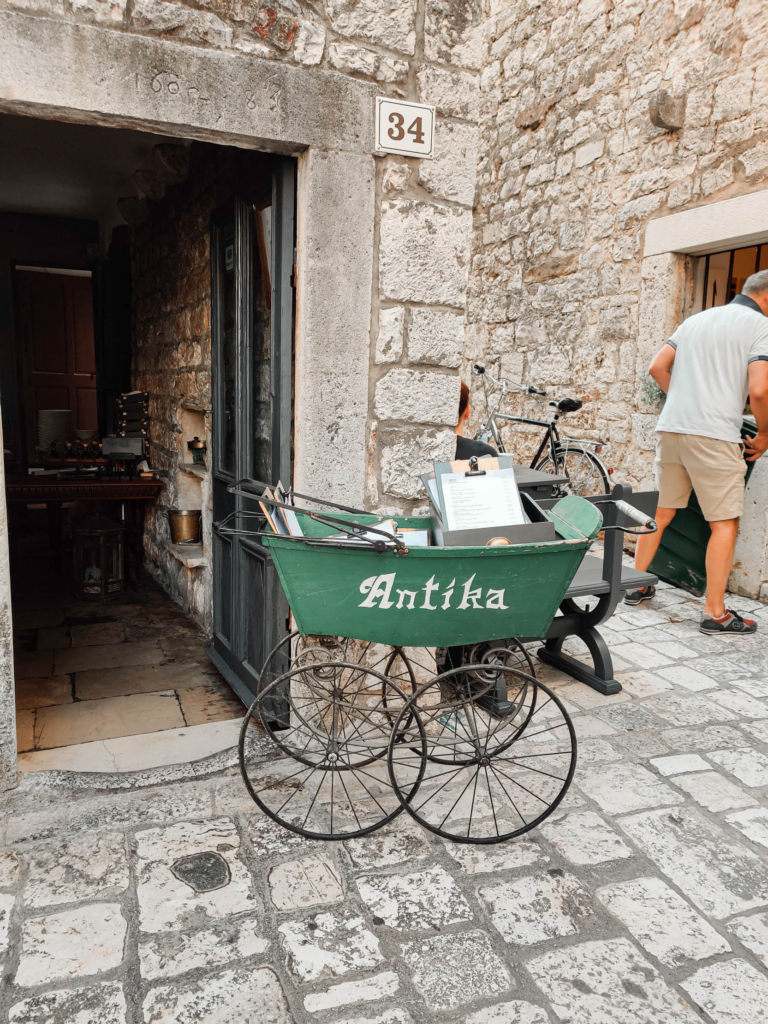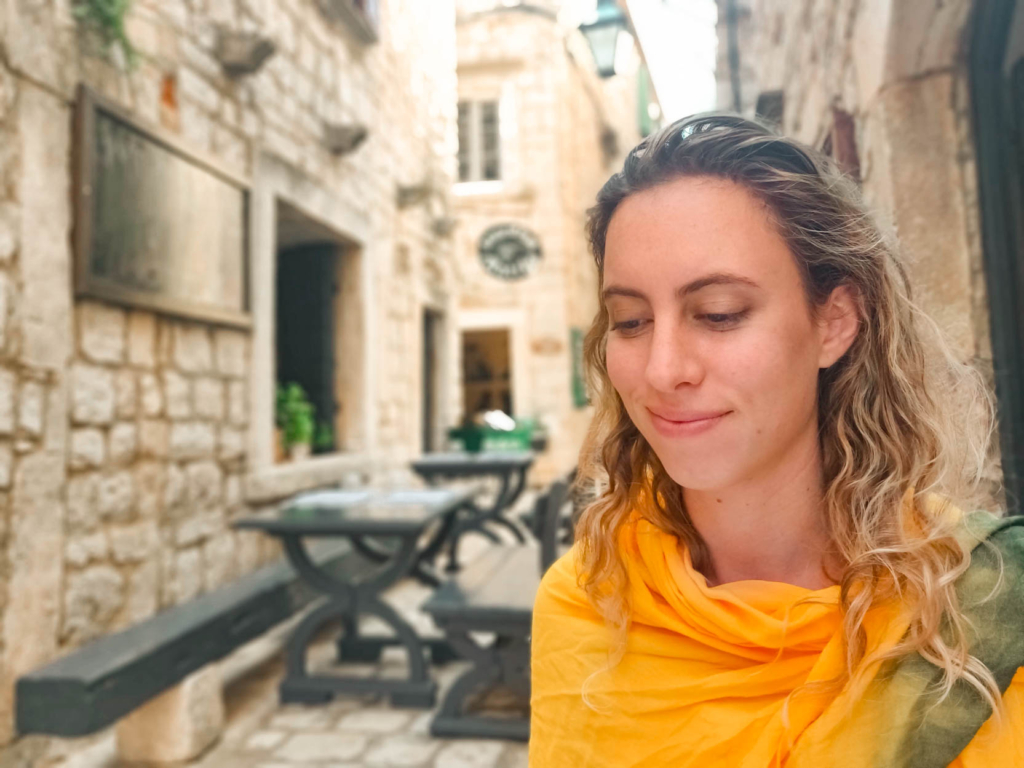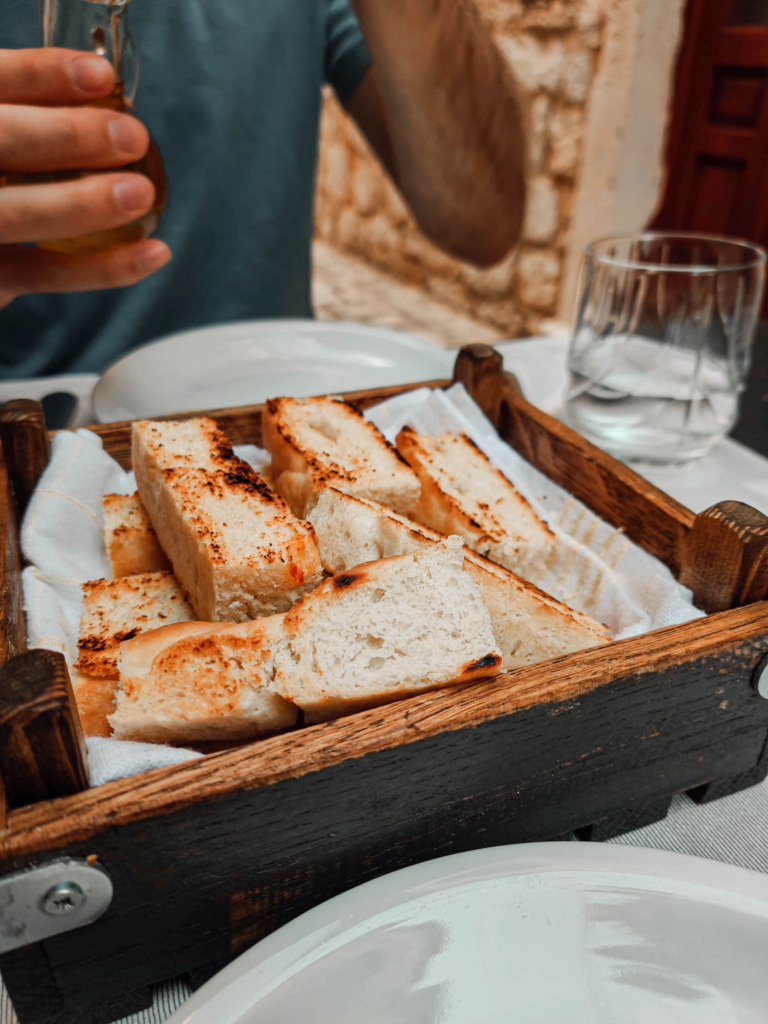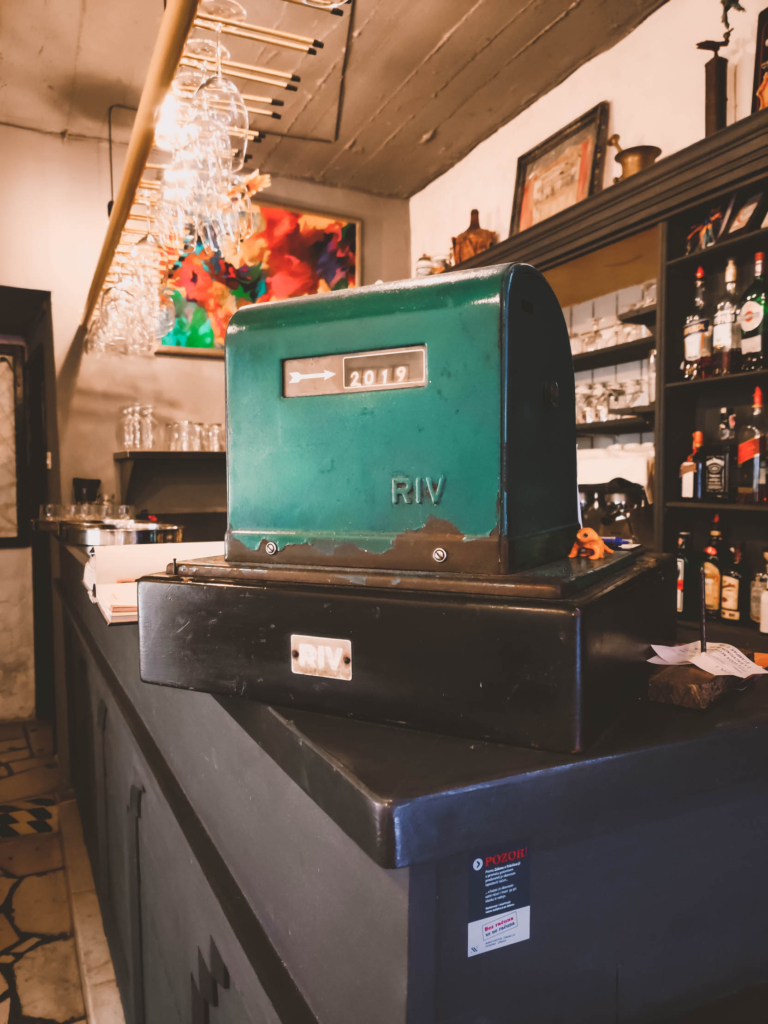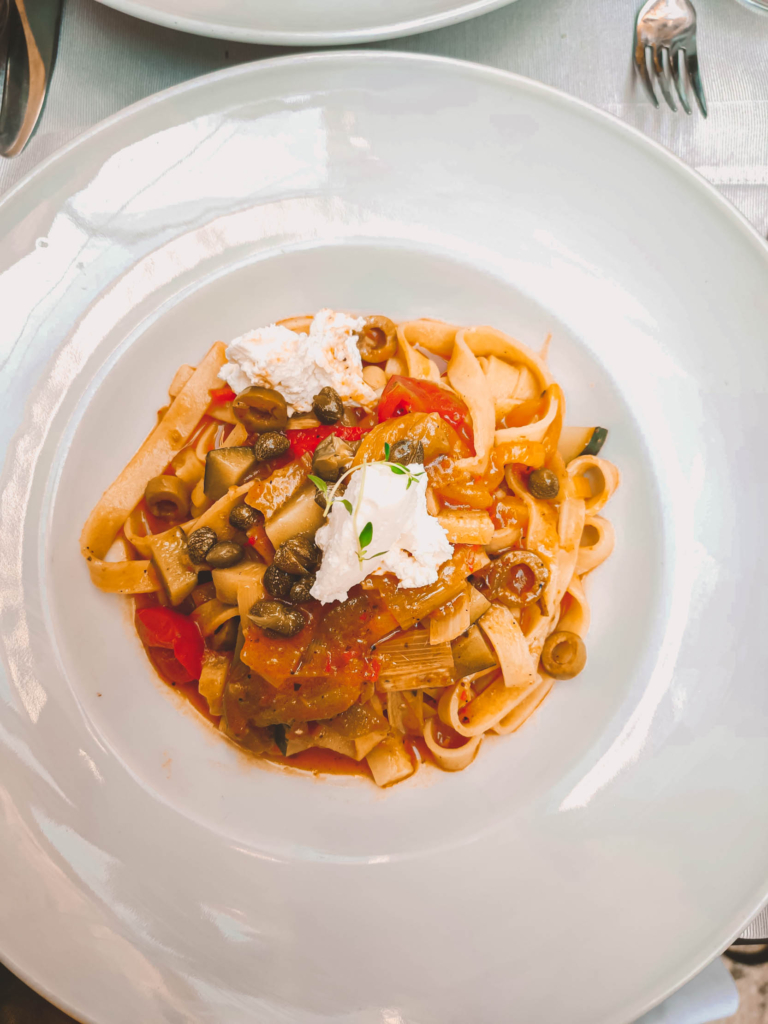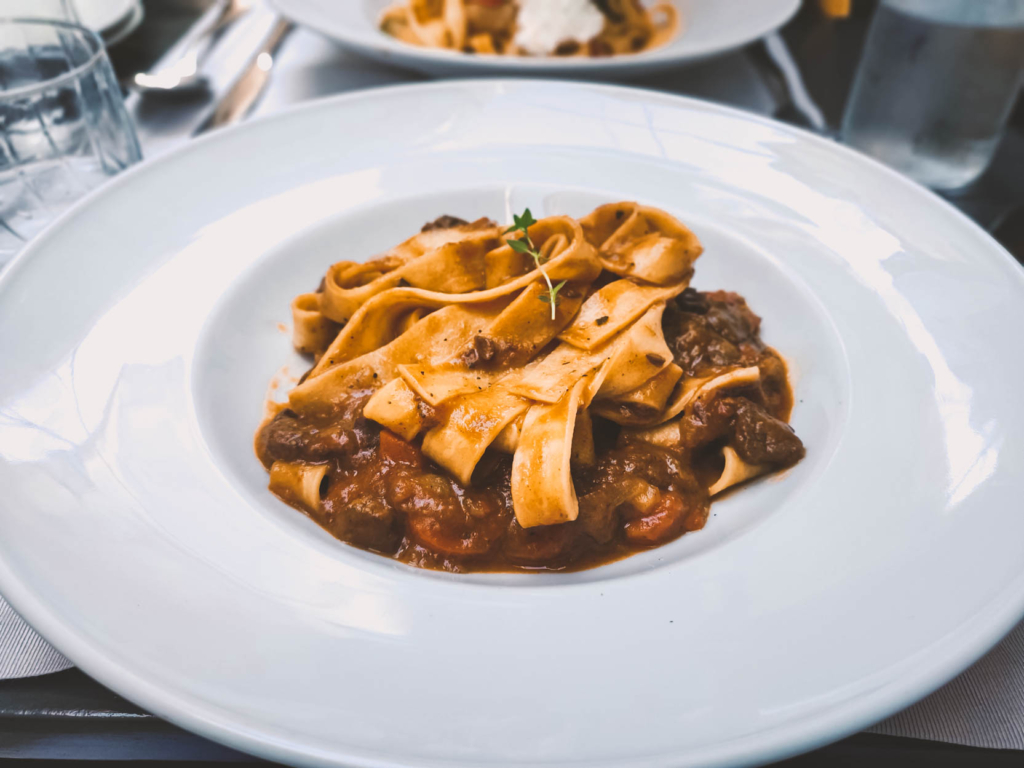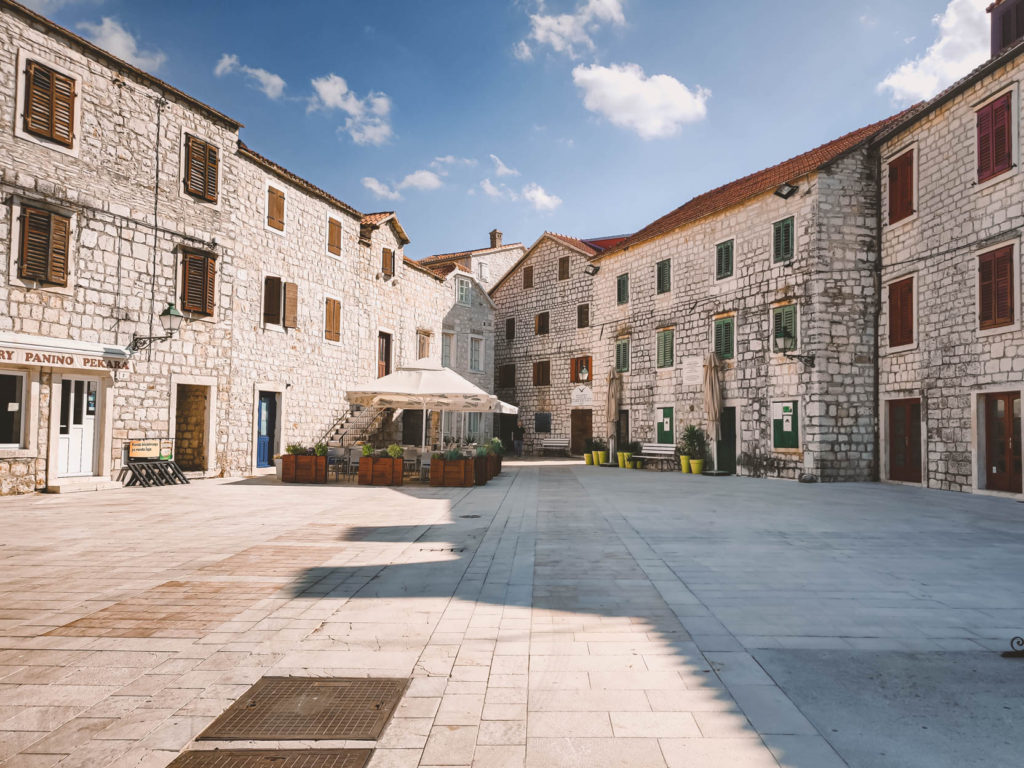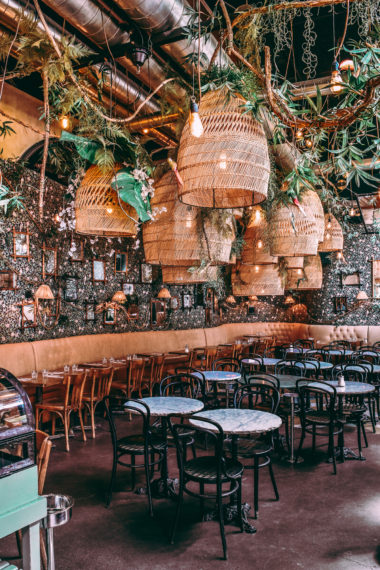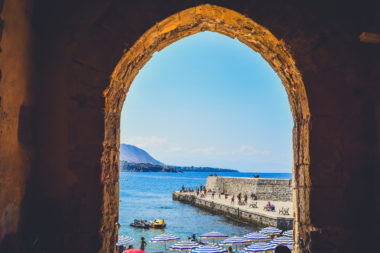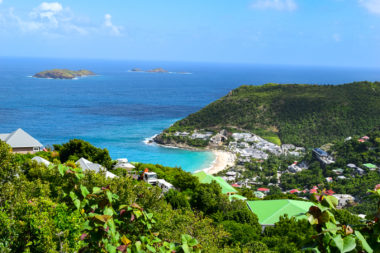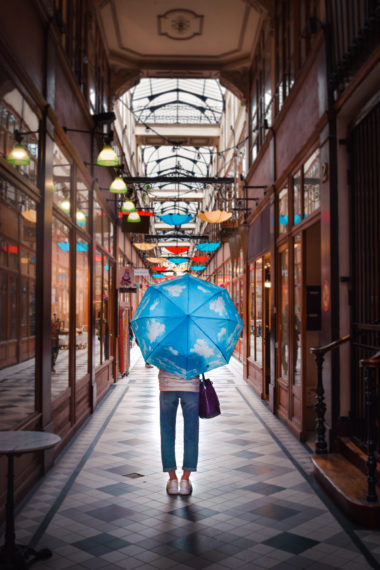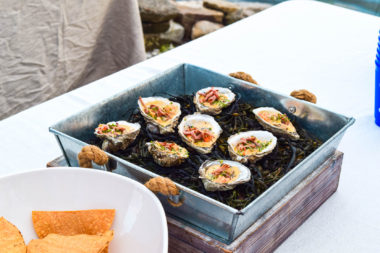Whether you’re sleeping in Stari Grad or visiting for an afternoon, you can’t skip this historic village and UNESCO World Heritage Site on Hvar.
Tour Stari Grad for colorful fishing villages, lush valleys, local Hvar communities and more. Stari Grad is one of the oldest towns in Europe and the oldest town in Croatia (according to historians). That’s why Pat and I rented an ATV from Hvar town and following our swims at Dubovica and Zarace coves drove North to Stari Grad, which translates to Old Town. Just 30-minutes from Hvar town, Stari Grad has an abundance of local stores and even a UNESCO World Heritage Site. If the quiet riviera and squares aren’t alluring enough, you don’t want to miss Stari Grad’s delicious local food from Antika.
We parked our ATV on the outskirts of Stari Grad since it’s a pedestrian only town and didn’t want to risk getting a ticket. On the way we stopped by church of St. Stephen, the first cathedral on Hvar.
Church of St. Stephen
As we aimlessly wandered through the maze-like Venetian streets, we somehow found our way to the main riva, what Croatians call the pedestrian walkway on the sea in the center of town. Riva is the main hub spot for the majority of the town’s cafes, bars, and restaurants. There’s usually a lot of activity until right after lunch, when everyone heads to the beach outside the city center.
It was late in the day, around 2PM, and Pat and I were starved. We came across a small local konoba with an outdoor rooftop terrace called Antika. The place was empty, but it was also 2PM so people were probably at the beach. Better for us, it meant all the attention of the staff was on us and our meal! We were debated between eating on the terrace or out in the cobblestone streets. The decor inside this over 400 year old stone house was indescribable, so much attention was paid to every detail: Antika has a secret room with a bathroom that is actually in someone else’s house, hand written menus, unique and antique furniture choices, the konoba is broken up into two houses–the cocktail room is on one side of the cobblestone alley while the restaurant is on the other side of the cobblestone alley, the dumbwaiter that carries cocktails up to the top floor, the antique baby stroller at the corner entrance, or the antiquated cash register. After all that contemplation, I chose the cobblestone street for its cool breeze and shady respite from the Adriatic sun. But the choice between inside and outside was tough.
Now, I am not one to order pasta for lunch I’m not going to lie. Coming from Northern Italy, my lunches are always a bit smaller than my counterparts in Southern Italy. Think panini and prosciutto with mozzarella vs pasta and lasagna. I don’t know if it was the intrigue of Antika, the well-designed menu, the heat of the Adriatic sun, or just pure exhaustion that was making me hungry, but the handmade pasta spoke to me. I ordered a vegetable pasta, Patrick the Bolognese pasta. Before our meals were served we were offered hot bread fresh from the oven with some local olive oil. The bread was on point and so was the olive oil, my anticipation for the pasta grew even more.
When my pasta was served I couldn’t believe my taste buds. Being Italian, it’s always hard for me to order pasta in a restaurant. But my god, this vegetable pasta was the best pasta I’ve ever had in my life at a restaurant. And I was in Croatia–not Italy! Antika’s homemade tagliatelle and pappardelle were the perfect consistency, you could tell they were handmade. But what really blew me away was the flavor of my pasta. A mix of olives, red and yellow peppers, tomatoes, celery, capers, and ricotta made for the most exquisite summer pasta I had had in my life. Patrick said the same about his, but I can’t attest first hand since I was so focused on devouring my own plate. If there is one place you need to dine at when in Stari Grad, please visit Antika and oredr their homemade pasta, you won’t regret it.
After our filling meal just steps from Antika we stepped onto Trg Skor Square. The square was formed during the 17th and 18th centuries from a former shipyard, hence it’s name Skor, from skver which in Dalmatian means shipyard. Today it is home to picturesque stone houses with terraces and staircases and a few cafes.
Just outside Stari Grad’s historic town center is its UNESCO World Heritage Site–its agricultural grid rich in vineyards, olive trees, and lavender fields segmented by hand built stone walls (similar to Cinque Terre). If you drive buy it stop by some vineyards and olive grows for tours and tastings. You won’t regret experiencing Stari Grad’s history through your sense of taste for a change rather than sight.
Had I had more time on Hvar than just one night, I would’ve split my time staying in Hvar Town and Stari Grad. The two offer a very different ambiance and reveal a very different side of Hvar, but both are critical to its history, people, and island allure.
>> Next: Best Walks in Hvar: Hike Robinson Trail
Follow SVADORE on:
